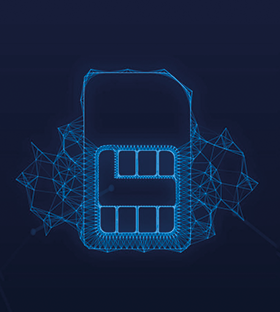

The Internet-of-Things (IoT) market is constantly evolving and with this evolution comes a need for uninterrupted data connectivity. At SIMcontrol, we have been working for over a decade to help our clients reliably connect to cellular networks and choose the right data roaming partners.
Even the best local networks can go down from time to time, whether this is a tower or regional level. For many of our customers, there is a real fear around the impact of network downtime, both from a reputation and an efficiency perspective. This is where multi-network SIM cards are a game-changer.
What is a multi-network SIM?
As the name suggests, multi-network SIM cards can connect to multiple mobile networks within a single country. Users don’t need to reconfigure any settings or make any changes to their device; the SIM automatically compiles a list of available networks and then connects to the one with the strongest signal. This means that reliability and availability are no longer a concern. And depending on the type of SIM you use, this approach can also be as cost-effective as local SIMs.
Useful for companies deploying complex connected devices in the field, multi-network SIMs are particularly impactful when IoT deployments cover different regions and different countries because they enable IoT data roaming. They come in all SIM formats, including embedded and eSIM options.
But not all global roaming SIM cards are the same. Many differences exist in terms of latency, IMSI options, data routing, reliability and pricing. Furthermore, there are two technically different roaming SIM types – steered and non-steered.
Points of clarity
Network-specific: Steered SIM cards have the functionality to connect to multiple networks, but they prioritise a primary network over other available networks. This means that these SIMs will favour the primary network even if the signal is poor. This can be beneficial when a certain network delivers greater reliability and resilience based on your location or specialty. Unlike a steered SIM, a non-steered SIM card doesn’t have a primary network meaning that devices will choose between networks randomly.
Signal strength: Where steered SIMs prioritise a network, non-steered SIMs prioritise connectivity. So when will a steered SIM make the switch from the priority network to another? A steered SIM card will only change networks when the signal drops below a specific threshold. Conversely, non-steered SIMs prioritise connectivity, so they will always connect to the strongest signal available, no matter the network.
Cost-effectiveness: For some business cases, data cost plays a bigger role than others, where critical connectivity outweighs the data cost. Steered SIMs will typically offer lower data rates on primary networks. Non-steered SIMs, on the other hand, will always prioritise the best connectivity, irrespective of network cost.
Deploying devices across many countries requires careful planning and demands that you have a data roaming solution suited for the specific project. Having control over deployed SIMs from both a technical as well as cost perspective is critical.
With SIMcontrol, you have access to an online SIM management platform that is quick and easy to use, offers reliable IoT-focused support and enables you to manage your mobile connectivity spend. SIMcontrol is network agnostic, so let us help you decide on the best global roaming option for your specific device deployment.
| Tel: | +27 87 943 7222 |
| Email: | hello@simcontrol.co.za |
| www: | www.simcontrol.co.za |
| Articles: | More information and articles about SIMcontrol |

© Technews Publishing (Pty) Ltd. | All Rights Reserved.